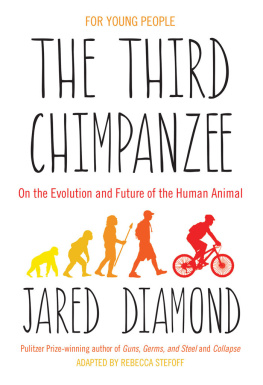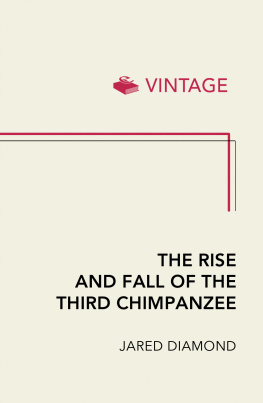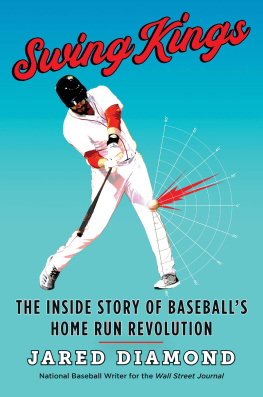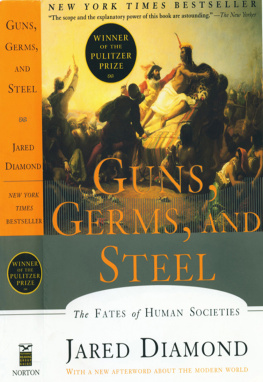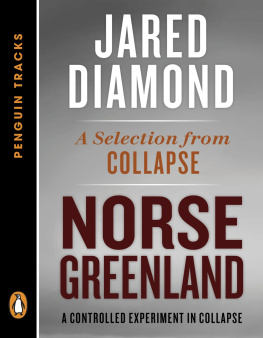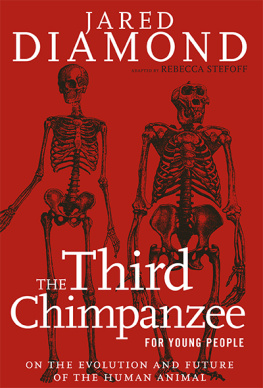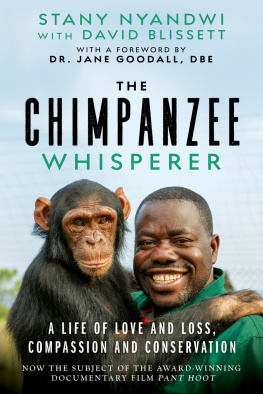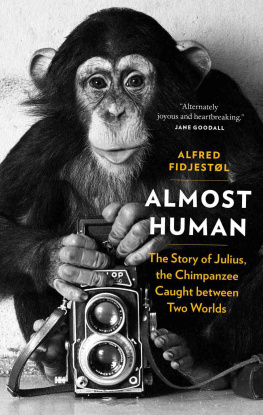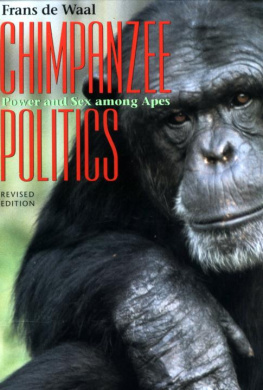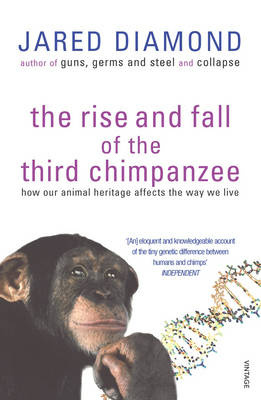THE Third Chimpanzee
FOR YOUNG PEOPLE
PRAISE FOR THE YOUNG PEOPLE S EDITION
This is exactly the kind of book that should be a set text for secondary school science: engaging, thought-provoking and bang up to the minute. If your teachers arent recommending books like this go out and get them anyway.
Guy Claxton, author of Whats the Point of School?
This readable book will appeal to those with an interest in evolution and mans effect on the environment throughout history.
Voice of Youth Advocates
PRAISE FOR THE ADULT EDITION
Diamond is as sharp as his name.
Kirkus Reviews
Written with great wit and a pleasure to read.
New York Times
This informative, most fascinating, and very readable book is highly recommended for all libraries.
Library Journal
The Third Chimpanzee will endure.
Edward O. Wilson, Harvard University
Everyone will enjoy reading this brilliant book.
Paul Ehrlich, author of The Population Bomb
Wonderful.
Diane Ackerman, author of A Natural History of the Senses

A Oneworld Book
The ebook edition published by Oneworld Publications, 2014
First published in Great Britain & Australia by Oneworld Publications, 2014
This edition was licensed by Seven Stories Press, Inc, New York, U.S.A., the originating publisher (2014)
Copyright Jared Diamond 2014
The moral right of Jared Diamond to be identified as the Author of this work has been asserted by him in accordance with the Copyright, Designs and Patents Act 1988
All rights reserved
Copyright under Berne Convention
A CIP record for this title is available from the British Library
Hardback ISBN 978-1-78074-604-3
ebook ISBN 978-1-78074-605-0
Book design by Pollen/Stewart Cauley, New York
Oneworld Publications
10 Bloomsbury Street
London WC1B 3SR
England
Stay up to date with the latest books, special offers, and exclusive content from Oneworld with our monthly newsletter
Sign up on our website
www.oneworld-publications.com
HUMANS ARE DIFFERENT FROM ALL ANIMALS. At the same time, humans are animalsa species of big mammal. This contradiction is our most fascinating feature. We still have a hard time understanding what it means and how it came to be.
On the one hand, between us and all other species lies a gulf that leads us to call them animals and to see them as separate from us. We think that centipedes, chimpanzees, and clams share some animal features that we dont have, or that we have human features that they dont share. Those human features include communicating through language, enjoying art, making complex tools, wearing clothes, and darker traits such as killing mass numbers of our own and other species.
On the other hand, we have the same body parts, molecules, and genes as other animals. Its even clear what type of animal we are. As long ago as the eighteenth century, scientists who studied anatomy (the structure of the body) saw that humans are very similar to chimpanzees, animals that live in Africa. We recognize two species of chimpanzees: the common chimp and the bonobo, sometimes called the pygmy chimp. A scientist from outer space would immediately classify humans as a third species of chimpanzee. Scientists right here on Earth know that we share more than 98 percent of our genetic makeup with the other two chimps.
The difference between our genes and chimps genes is small. Yet that small difference must have been responsible for the things that make humans unique. And all those changes happened fairly recently in our genetic history. Somehow, within a few tens of thousands of years, we started to show the features that make humans unique and fragile. This book takes a close look at how and why we developed those features, both good and badfrom language, art, and our life cycle to our ability to destroy our own and other species.
How This Book Came to Be
My own interests and background shaped this book. As a child, I wanted to be a doctor. By my last year in college, that goal had gently changed, and I wanted to become a medical researcher. I trained in physiology, which is the study of how living systems function, from cells to animals. Afterward I went on to teach and do research at the University of California Medical School in Los Angeles.
But I had other interests as well. Birdwatching had attracted me since the age of seven, and I had also been lucky to attend a school that let me plunge into languages and history. I did not like the idea of spending the rest of my life on physiology alone. Then I had the chance to spend a summer in the highlands of New Guinea, a large tropical island north of Australia. The purpose of the trip was to measure how successfully birds were nesting. That project collapsed when I was unable to locate even a single birds nest in the jungle, but the trip fed my thirst for adventure and birdwatching in one of the wildest remaining parts of the world.
After that first trip to New Guinea, I developed a second career, focused on birds, evolution, and biogeography. Ive returned to New Guinea and the neighbouring Pacific islands many times to pursue my bird research. As I saw human activity destroying the forests and birds I loved, I became involved in conservation, helping governments design national parks to protect ecosystems and plant and animal species.
Finally, it was hard to study the evolution and extinction of birds without wanting to understand the evolution and possible extinction of the most interesting species of all, the species that includes you, me, and everyone on EarthHomo sapiens, the modern human. This book was the result. It begins with a look at our origins several million years ago. It ends with some thoughts about our future, and about ways we can learn from our past.
Building a Big Picture
The story of how we became human spans millions of years, and it pulls together information and ideas from many branches of science. In writing this book, I drew on my own experiences and the sciences I have studied, and also on the work of many scientists in other fields, from archaeology to zoology. Pieces of the story come from fields as different as palaeopathology, the study of ancient diseases, and palaeobotany, the science of fossil plants.
As youve seen, my background started with anatomy and physiology, then moved on to the study of birds, especially their ecologythat is, the ways birds interact with other species around them and with their environment. As a biogeographer, Im interested in the relationships between geography and living things. Biogeographers ask questions such as: Why are some species spread out across almost the entire world, while others live only in a single tree? As youll see in this book, biogeography has played a big role in the history of our species.
I am also an evolutionary biologist. This means that I look at animals and plants in terms of evolution, the process of change in life on Earth over time, as new species develop and old ones become extinct. (In chapter 4, youll read about how this happens.) In this book, I use the framework of evolutionary biology to examine human features and behaviour.
Seeing Ourselves in a New Way
From a scientists point of view, things often look different from the way they look in everyday life. Take the question of how people are attracted to each other. What do you find attractive in another person? There are as many answers to that question as there are individuals in the world.

